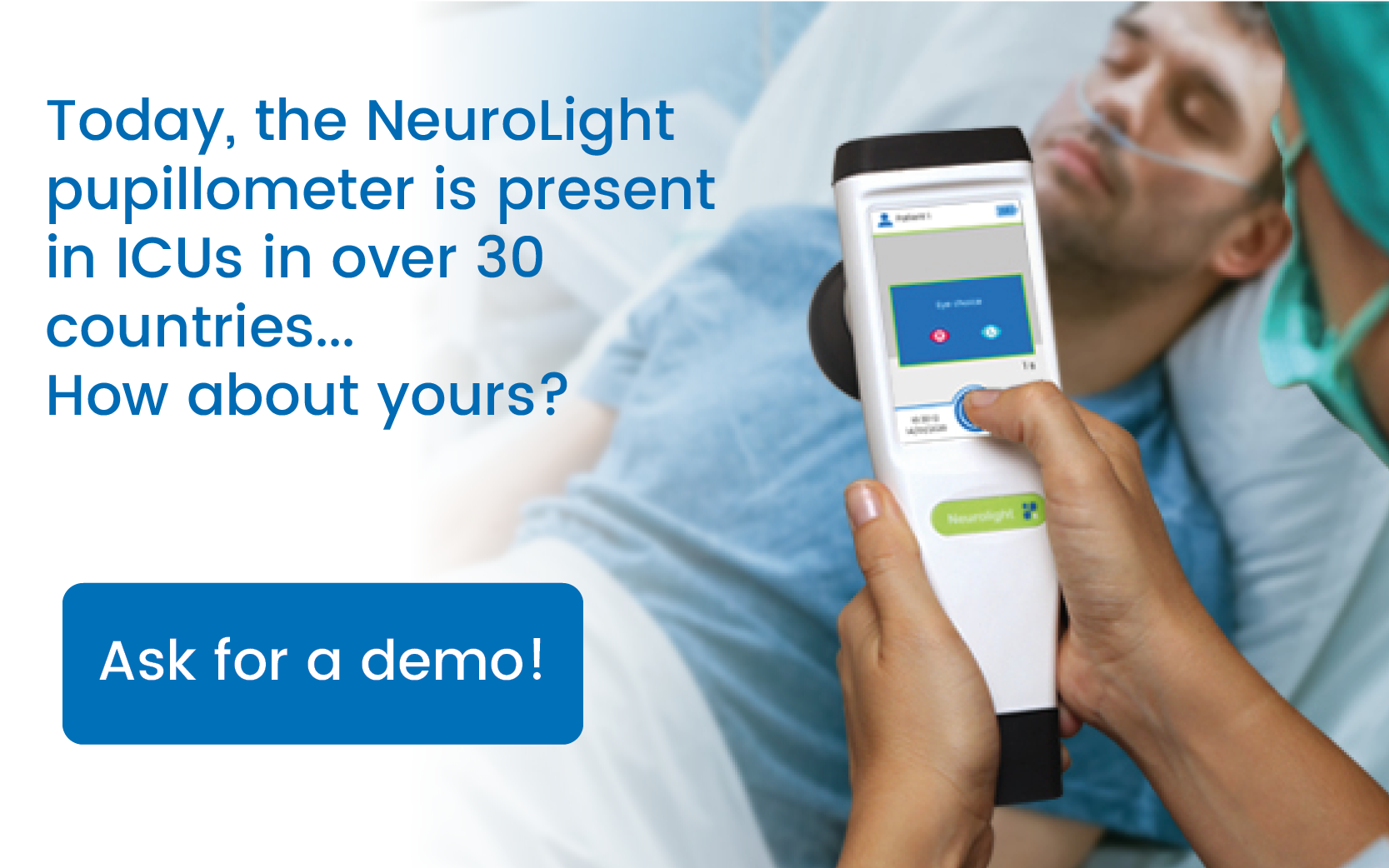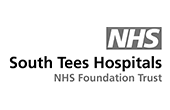
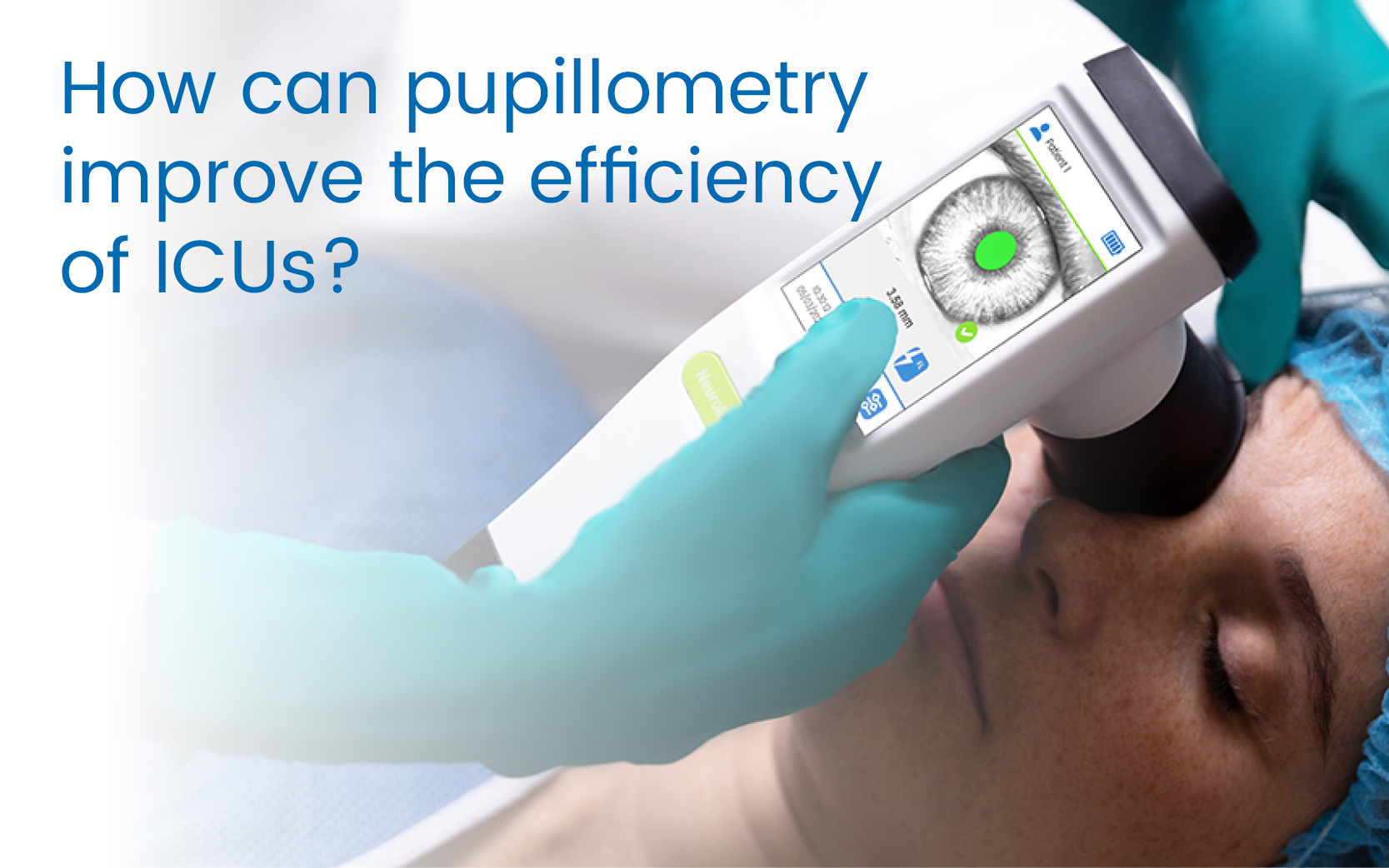
Many patients admitted to the intensive care unit (ICU) have pre-existed or acquired neurological disorders which significantly affect their short term and long-term outcomes.(1)
Moreover, it has been shown that all critically ill patients should undergo routine Neurological Examination (NE)(1). As part of NE, pupillary assessment is essential and must be accurate and reliable.
In order to meet the need of accurate and reproducible assessment of the pupil size and reactivity, the use of automated pupillometry is a way to standardize the practice.
10 reasons to use pupillometry in ICU
1. For reliable measurements
The Quantitative Pupillometer NeuroLight expresses pupil reactivity numerically. It takes away any examiner-dependent errors.
2. For reproducible measurements
NeuroLight opaque eyecups to ambient light allow accurate measurements under all circumstances.
3. For bedside monitoring
NeuroLight is a compact and wireless device that can be easily used at the bedside of the patient. It enables early therapeutic intervention when difficult-to-access diagnostic tools are not available.

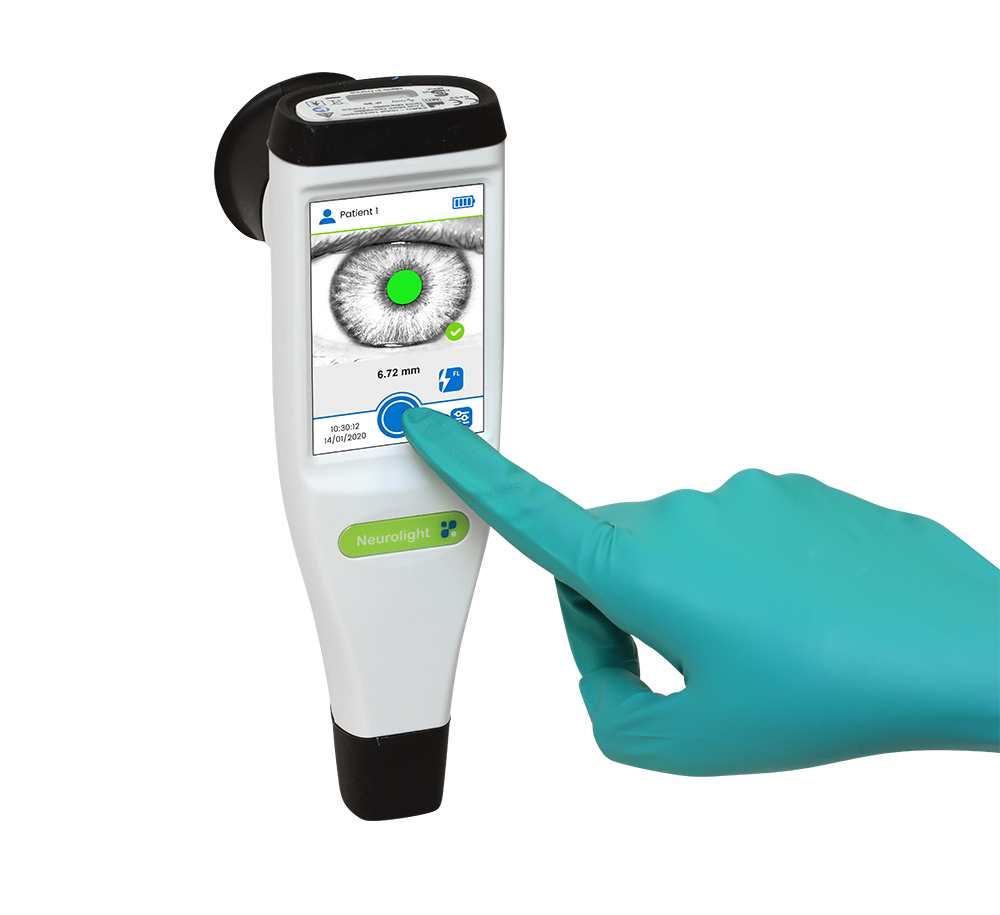
4. To make a routine examination easy
The color coded QPi Score (Quantitative Pupillometry Index) objectifies pupillary assessment. “Brisk” is green, “Sluggish” is orange and Non-reactive is “Red”. No room for doubts.
5. To simplify the comprehension of the qPLR
The NeuroLight gives you both precise measurements and easy interpretations. The QPi score simplifies it all but you still have access to constriction rate, velocity and other values you would need.
6. To save time on routine examinations
Having objective data on pupil assessment removes subjectivity and makes it easy to pass on patient information.
7. To secure patient data
NeuroLight allows digital traceability of the data by transferring the measurements results into the patient file via Bluetooth.
8. To detect early changes
NeuroLight expresses pupil reactivity numerically, so that both pupil size and reactivity can be monitored over time, just like any other vital signs. Any significant changes are then detected early and can be reported if necessary.
9. To predict neurological outcomes
Several studies show that NeuroLight could improve the predictive factor of neurological deterioration in a comatose patient after cardiac arrest. (2) (3)
10. At a reasonable price
The NeuroLight is sold with reusable and autoclavable eyecups. Purchase of consumables is not required. This reduces the investment at the purchase of the device and the costs in following years are reduced to zero.
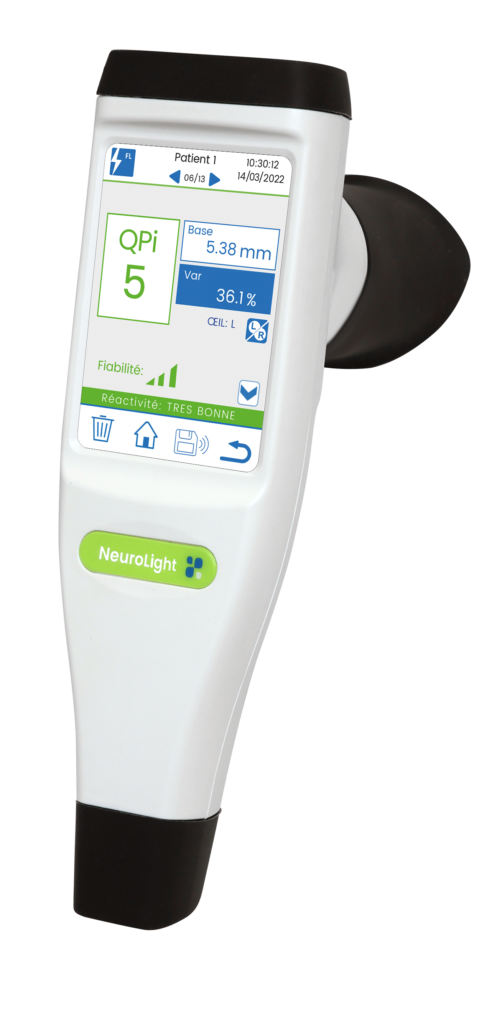
In the context of neurological examination, pupillary examination is therefore essential and must be accurate and reliable. To meet this need, the use of the NeuroLight pupillometer is a simple solution to make the measurement of pupil size and reactivity more reliable and thus to standardise the practice.
For the reasons developed above, the NeuroLight pupillometer is a tool designed to improve the efficiency of ICUs:
To save time on routine examinations
Having objective data on pupillary assessment removes subjectivity and allows easy transmission of patient information.
To facilitate a routine examination
Pupillary reactivity is thus represented by the QPi score ranging from 0 to 5 and is illustrated by a colour. Green means a pupil that is clinically “reactive” to light, orange represents a “reduced” reactivity, and finally, the “non-reactive” pupil will appear red. The NeuroLight pupillometer gives you both accurate measurements and easy to understand interpretations.
For bedside neurological monitoring
A pupillometer like NeuroLight is a compact, wireless device that can be easily used at the bedside.
WANT TO TRY THIS NEW TECHNOLOGY? Contact us now to arrange a demonstration of NeuroLight.
In the context of neurological examination, pupillary examination is therefore essential and must be accurate and reliable. To meet this need, the use of the NeuroLight pupillometer is a simple solution to make the measurement of pupil size and reactivity more reliable and thus to standardise the practice.
For the reasons developed above, the NeuroLight pupillometer is a tool designed to improve the efficiency of ICUs:
To save time on routine examinations
Having objective data on pupillary assessment removes subjectivity and allows easy transmission of patient information.
To facilitate a routine examination
Pupillary reactivity is thus represented by the QPi score ranging from 0 to 5 and is illustrated by a colour. Green means a pupil that is clinically “reactive” to light, orange represents a “reduced” reactivity, and finally, the “non-reactive” pupil will appear red. The NeuroLight pupillometer gives you both accurate measurements and easy to understand interpretations.
For bedside neurological monitoring
A pupillometer like NeuroLight is a compact, wireless device that can be easily used at the bedside.
WANT TO TRY THIS NEW TECHNOLOGY? Contact us now to arrange a demonstration of NeuroLight.
(2) * https://linkinghub.elsevier.com/retrieve/pii/S0300-9572(16)00110-6
(3) Neurocrit Care. 2014 Oct;21(2):300-8. doi: 10.1007/s12028-014-9981-z.


